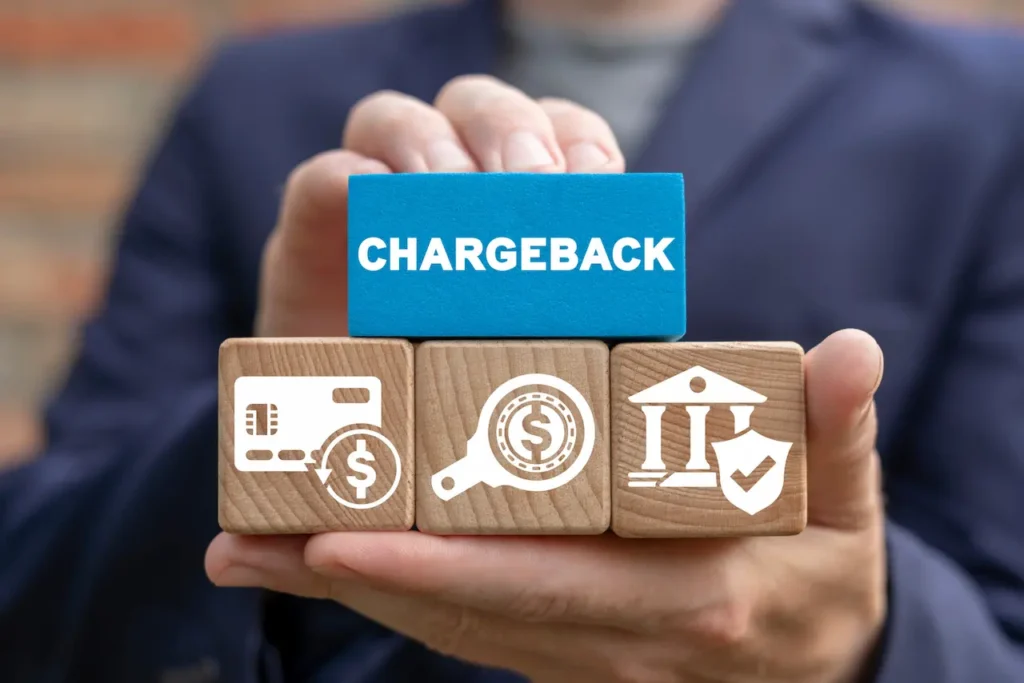Chargebacks can hurt your business’s revenue and reputation. This blog offers quick, practical tips to prevent them by improving communication, tightening security, and refining billing practices. Keep reading to protect your business and reduce chargebacks!
What Is A Chargeback
A chargeback occurs when a customer disputes a transaction with their bank or credit card issuer. This process allows consumers to reverse a charge, resulting in the return of funds.
Chargebacks often stem from fraud, unauthorized transactions, or customer dissatisfaction with a product or service.
Here’s a breakdown of the chargeback process:
- Initiation: A customer contacts their bank to dispute a charge, providing reasons for the claim.
- Investigation: The bank investigates the claim, reviewing transaction details and any evidence provided by the customer.
- Resolution: After evaluation, the bank decides whether to uphold or deny the chargeback. If approved, the funds are returned to the customer, and the merchant’s account is debited.
- Merchant Response: Merchants can contest the chargeback by presenting evidence to dispute the claim. This might include receipts, correspondence, and transaction records.
Chargebacks help protect consumers from fraud and promote accountability among businesses. For your small business, excessive chargebacks can harm your reputation and result in financial penalties.
Why Do Chargebacks Happen: 7 Reasons for Chargebacks
1. Fraudulent Transactions
Fraud remains one of the leading causes of chargebacks. Customers may suspect their credit card has been compromised when they notice an unfamiliar charge on their statements. In response, they initiate a chargeback to recover their funds.
Preventive Measures: Merchants can reduce fraud-related chargebacks by implementing robust security measures, such as:
- Fraud Detection Tools: Use software that identifies unusual purchasing patterns.
- Address Verification System (AVS): This system requires customers to enter their billing address during checkout to verify their identity.
- Two-Factor Authentication: Encourage additional security steps during online transactions.
2. Product or Service Issues
Customers expect to receive what they pay for. Customers will likely dispute the transaction if a product is defective, not as described, or fails to arrive. Common issues leading to chargebacks include:
- Incorrect item shipped
- Items arriving damaged or defective
- Services not rendered as promised
Preventive Measures: To address these issues, merchants should:
- Enhance Product Descriptions: Provide detailed information, including specifications and images, to set accurate expectations.
- Implement Quality Control: Regularly check inventory and service offerings to minimize the risk of defects.
- Communicate Delivery Updates: Keep customers informed about shipping status and potential delays.
3. Billing Errors
Mistakes in billing can lead to disputes. Examples include:
- Duplicate charges for the same purchase
- Incorrect transaction amounts
- Charges appearing from previous subscriptions
Preventive Measures: Businesses can minimize billing errors by:
- Automated Billing Systems: Implement reliable systems that reduce human error in billing.
- Clear Invoices: Ensure invoices are easy to read and itemized.
4. Dissatisfaction with Services
Chargebacks can also stem from poor customer experiences. If a customer feels that a service did not meet their expectations or if customer support is unresponsive, they may opt for a chargeback as a means of recourse.
Preventive Measures: Merchants should prioritize customer satisfaction by:
- Improving Customer Support: Offer multiple channels for customer inquiries and support, such as live chat, email, and phone.
- Collecting Feedback: Regularly solicit customer feedback to identify areas for improvement.
5. Misunderstanding of Charges
Customers may dispute charges due to confusion over what they see on their bank statements. For example, if a company name appears differently than expected, it can lead to misunderstandings.
Preventive Measures: To reduce confusion:
- Transparent Transaction Descriptions: Use recognizable business names on transaction records.
- Clear Communication: Inform customers about upcoming charges, especially for subscriptions.
6. Recurring Payments
Subscription services often lead to chargebacks when customers forget they signed up for a recurring payment. They may dispute charges after realizing they are being billed again.
Preventive Measures: To manage recurring payments effectively:
- Clear Terms and Conditions: Ensure customers understand the terms of subscriptions, including billing cycles and cancellation policies.
- Reminder Emails: Send notifications before charging customers for recurring services.
7. Merchant Practices
Unclear return policies, hidden fees, and lack of communication can contribute to chargebacks. Customers who feel misled or unsupported are more likely to dispute charges.
Preventive Measures: Merchants should:
- Establish Clear Return Policies: Clearly outline return and refund procedures to customers.
- Maintain Open Communication: Engage with customers proactively to resolve issues before they escalate.
Implications of Chargebacks
Chargebacks can have significant consequences for merchants. Frequent chargebacks can lead to:
- Financial Losses: Merchants not only lose the sale but also incur chargeback fees and potential penalties from payment processors.
- Damage to Reputation: High chargeback rates can harm a business’s reputation, affecting customer trust and future sales.
- Increased Scrutiny: Payment processors may monitor businesses with high chargeback rates, potentially leading to the suspension of merchant accounts.
How To Prevent Chargebacks
While you cannot completely eliminate chargebacks, you can implement strategies to reduce their occurrence and impact significantly. Here are effective measures to help stop chargebacks:
1. Improve Customer Communication
- Clear Information: Provide detailed product descriptions, pricing, and terms of service. Ensure customers understand what to expect.
- Order Confirmation: Send confirmation emails after purchases, including transaction details and contact information for support.
2. Enhance Transaction Security
- Fraud Detection Tools: Use software that identifies suspicious activity, flagging potential fraudulent transactions.
- Secure Payment Processes: Implement SSL certificates to protect customer information during online transactions.
3. Streamline Your Refund and Return Policies
- Clear Policies: Clearly outline refund and return procedures on your website. Make it easy for customers to find this information.
- Responsive Support: Provide multiple channels for customer inquiries and resolve issues promptly to prevent frustration.
4. Use Descriptive Billing
- Recognizable Charges: Ensure that billing statements feature your business name clearly to prevent confusion.
- Subscription Notifications: If you offer subscription services, send reminders before charging customers.
5. Monitor Chargeback Trends
- Analyze Data: Regularly review chargeback reasons to identify patterns. Understanding the root causes will help you implement targeted solutions.
- Track Chargeback Ratios: Keep an eye on your chargeback ratios and compare them to industry standards. Aim to stay below the acceptable threshold.
6. Document Everything
- Keep Records: Maintain detailed records of transactions, communications, and evidence for disputes. This documentation can support your case if you need to contest a chargeback.
- Collect Customer Feedback: Regularly solicit feedback to address potential issues before they escalate to chargebacks.
7. Respond Promptly to Chargebacks
- Timely Responses: If you receive a chargeback notification, respond quickly with evidence to dispute the claim. Include transaction details, customer communications, and any relevant documentation.
- Follow Up: After resolving a chargeback, follow up with the customer to address their concerns and restore trust.
8. Educate Your Team
- Training: Train your staff on chargeback prevention strategies and how to handle customer inquiries effectively.
- Awareness: Ensure your team understands the importance of customer satisfaction in reducing chargebacks.
Can You Stop Chargebacks?
You cannot completely stop chargebacks, but you can reduce them. Strengthen customer communication, enhance transaction security, clarify refund policies, and monitor trends. By promptly responding to chargebacks with supporting evidence and educating your team on effective practices, you can significantly reduce chargeback occurrences and protect your business’s revenue.




